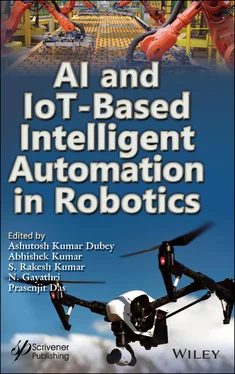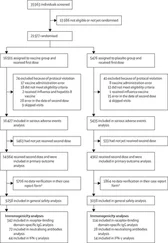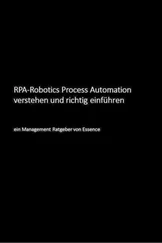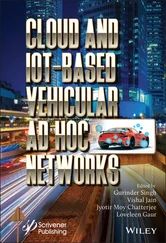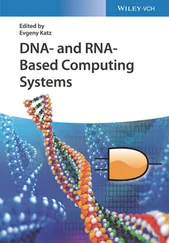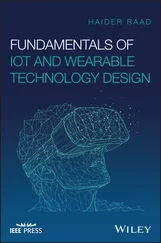4. Li, Z., Zhang, T., Ma, C., Li, H., Li, X., Robust Passivity Control for 2-D Uncertain Markovian Jump Linear Discrete-Time Systems. IEEE Access , 5, 12176–12184, 2017.
5. Yang, C., Ge, S.S., Xiang, C., Chai, T., Lee, T.H., Output Feedback NN Control for Two Classes of Discrete-Time Systems with Unknown Control Directions in a Unified Approach. IEEE Trans. Neural Networks , 19, 11, 1873–1886, Nov. 2008.
6. Münz, U., Pfister, M., Wolfrum, P., Sensor and Actuator Placement for Linear Systems Based on Optimization. IEEE Trans. Autom. Control , 59, 11, 2984–2989, Nov. 2014.
7. Sui, S., Tong, S., Chen, C.L.P., Finite-Time Filter Decentralized Control for Nonstrict-Feedback Nonlinear Large-Scale Systems. IEEE Trans. Fuzzy Syst. , 26, 6, 3289–3300, Dec. 2018.
8. Rakovic, S.V. and Baric, M., Parameterized Robust Control Invariant Sets for Linear Systems: Theoretical Advances and Computational Remarks. IEEE Trans. Autom. Control , 55, 7, 1599–1614, July 2010.
9. Li, Y., Sun, K., Tong, S., Adaptive Fuzzy Robust Fault-Tolerant Optimal Control for Nonlinear Large-Scale Systems. IEEE Trans. Fuzzy Syst. , 26, 5, 2899–2914, Oct. 2018.
10. Zhang, H. and Feng, G., Stability Analysis and $H_{\infty}$ Controller Design of Discrete-Time Fuzzy Large-Scale Systems Based on Piecewise Lyapunov Functions. IEEE Trans. Syst. Man Cybern. Part B (Cybernetics) , 38, 5, 1390–1401, Oct. 2008.
11. Bakule, L., Rodellar, J., Rossell, J.M., Robust Overlapping Guaranteed Cost Control of Uncertain State-Delay Discrete-Time Systems. IEEE Trans. Autom. Control , 51, 12, 1943–1950, Dec. 2006.
12. Liu, Y. and Tong, S., Adaptive NN Tracking Control of Uncertain Nonlinear Discrete-Time Systems with Nonaffine Dead-Zone Input. IEEE Trans. Cybern. , 45, 3, 497–505, March 2015.
13. Li, D. and Li, D., Adaptive Control via Neural Output Feedback for a Class of Nonlinear Discrete-Time Systems in a Nested Interconnected Form. IEEE Trans. Cybern. , 48, 9, 2633–2642, Sept. 2018.
14. Alzenad, M., El-Keyi, A., Yanikomeroglu, H., 3D placement of an unmanned aerial vehicle base station for maximum coverage of users with different QoS requirements. IEEE Wirel. Commun. Lett. , 7, 38–41, 2018.
* Corresponding author : vishaldutt53@gmail.com
2
Techniques in Robotics for Automation Using AI and IoT
Sandeep Kr. Sharma, N. Gayathri*, S. Rakesh Kumar and Rajiv Kumar Modanval
School of Computing Science and Engineering, Galgotias University, Uttar Pradesh, India
Abstract
Gone are the days when people use manual methods to perform every task; now the world has evolved and we have advanced technologies like artificial intelligence (AI) and the internet of things (IoT) that have changed our world outlook. With the rapid advancement in technology, we are gifted with lots of modern technologies that are being integrated into our day-to-day lives, making it much easier.
In this chapter, we will discuss various techniques used for automation, like AI and the IoT, which form the basis for robotics. There’s a technique called robotic process automation (RPA) which is very popular nowadays, which can be used to automate any computational process. One software that is used to practice and build the RPA system is UiPath Studio, which comes in handy for all sorts of scripts and contains many tools that can be used to make automated bots. Apart from that, we will be discussing and proposing some other such techniques and studying the requirements for AI and IoT in the automation of robots.
Defining the roles and algorithms in integration with machine learning (ML), we will also be looking at some case studies and various other applications for automation in different scenarios. With the increase in the popularity of AI, the day is not very far off when we will have a replacement for humans—not only a replacement, but also a more advanced form of humans. Today, robots are so smart that they are capable of mimicking human behavior and are so efficient that it will take a normal human about 100 to 1000 times more time to complete the task. In this way, they are making our lives so easy and comfortable.
Keywords:Artificial intelligence (AI), internet of things (IoT), robotics, automation, robots, machine learning
Technically the word automation refers to the running of some action or process that mimics human behavior without or very little involvement of humans. Earlier this was not very popular and things were mostly processed via humans but with the advancement of technology and computation power we now have access to the most advanced robots and automation [1] tools with which one can perform any task easily and rapidly. If we look at the broader aspects of automation it mainly finds application in industries and manufacturing sectors which were the provenience for the automation and the automated machines used for various jobs like painting, manufacturing parts, storage, monitoring, etc. Still, almost all industries are utilizing these automated robots in their day-to-day processes.
The Industrial Revolution [2] played a big role in making automation so popular that it is considered foolish not utilize the automation procedure, as not using automation will lead to a waste of time and money as “time is money.”
2.2 Brief History of Robotics
Robotics has always been a fascinating topic for research and innovation which has its origin in ancient times, but the modern notion began to be established with the inception of the Industrial Revolution. The term “robot,” which in Czech means slave, was first coined in a play about the men working on the assembly lines of factories [3]. Also, the term “robotics” [4] was neologized by the American science fiction writer Isaac Asimov in his story “Runaround” in the year 1942. Who knew the robots dreamed of in fiction would become one of the revolutionary technologies in the near future [5]?
The first robot was invented in the year 1950 by George C. Devol [3], who patented a reprogrammable manipulator termed “Unimate.” He tried selling it to industry but failed. A few years later, in 1960 Joseph Engelberger, an engineer and businessman, procured the patent from Devol and modified it to make an industrial robot and established a company called Unimation to produce and sell the robots. His works and endeavors gave him the honorary title of “Father of Robotics” [6] in industry. So, it is uncanny that the robots that we have today were idealized from science fiction and now are revolutionizing technology.
Artificial Intelligence: Refers to making machines capable of mimicking human behavior and intelligence in a way to act and think like humans. And it is called artificial because the intelligence has been given to machines by means of some programming which is dissimilar to the natural intelligence exhibited by humans. The term “artificial intelligence” (AI) was first coined in 1856 by John McCarthy. AI is one of the disruptive technologies with powerful features and can be used in a wide variety of applications; for example, AI can be used to play games, monitor the health of patients and used as a traffic controller system. In the education sector it can act as an independent and effective tutor; apart from that it can be used to predict diseases and weather, etc. The list is countless [7] as it finds endless possibilities of applications due to its advanced characteristics and tools.The Venn diagram of AI in Figure 2.1below shows that it is the superset of machine learning (ML) and deep learning (DL).
Читать дальше
